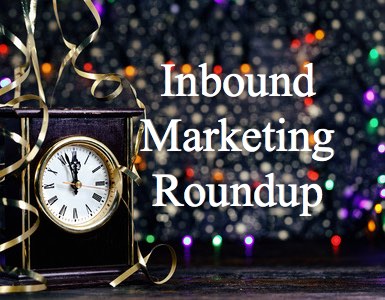
2017 was a tremendous year for inbound marketers. The fascinating thing about digital marketing, which inbound marketing is one methodology, is that the landscape is constantly changing. This year, we experienced change from many sides; search engines change their algorithms, more and more companies (and your competitors) improved their online game taking a higher share of visitors, and the buyers have changed the way they find the products and solutions they need.
Let's drill into each one of these major themes and offer advice about what you can do to help your business stay ahead of the pack and have a successful 2018.
Search engines, most notably Google, have made several changes in 2017 as they seek to improve the search experience for their users. Bing and Yahoo have made similar changes, however Google tends to lead the pack with 77% of all search volume.
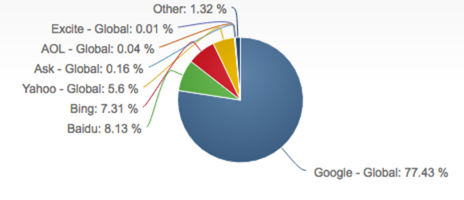
Early in the year, google focused on enhancing voice search. Voice search happens mostly on mobile phones where the user speaks their request into the microphone and google responds with search results. This focus on voice search has increased the importance of local SEO as users searched for "pizza shop near me" or other items where the search engine uses both your geographical location and your verbal request to find local pizza shops.
This list of voice search statistics show it is here to stay:
Here is a video by Rand Fiskin of MOZ that really drills into voice search.
Another change was the focus on search intent. In this change, Google notices when a searcher clicks a link on a search result and very quickly hits the back button. That behavior tells Google that the page does not satisfy searcher intent and the engine will demote that page in the search rank for that search term. It's like google is crowdsourcing search quality.
Conversely, if the searcher spends time on the page, the search engine believes that page has satisfied the searcher intent. This change means that the quality of your content has to be better than ever, and better than competing sites. The lesson is to take your time to create the highest quality content you can. Further, consider the three main types of search intent when creating content.
The process of determining keyword search intent will begin with figuring out which category of search query your keyword falls into. There are three primary types of queries: informational, navigational and transactional.
The majority of web-based content is informational in nature. Some research has even suggested that around 80% of all queries are informational, with the remaining 20% being split evenly between navigational and transactional. These metrics provide an additional factor for the content strategies we create.
The third notable change happened just recently (in mid November 2017). Google has increased the length of the meta description they will display in search results. The impact of this change is that all websites that were conforming to the previous guidelines of 160-180 characters are now not optimized for search - and that includes most websites.
The new range is 230-320. MOZ recommends that you perform the search for the search term that each page is optimized and check the length of the meta descriptions of the top results and use that as a guide. This is the video from the whiteboard Friday that describes this change.
Here is a link to the article on MOZ about the longer snippets.
Have you ever thought about the deals you are not getting because target buyers are not finding your business online but instead are finding your competitors and choosing them? It happens all of the time. Studies by Forrester Research shows that online searches are executives’ first course of action (just like everyone else) and 74% of business buyers conduct more than half of their research online before making an offline purchase.
So, the message here is, don't let your personal bias for the use (or lack thereof) of the internet dissuade you from investing in a high quality digital experience for your business. The choice to under invest is like deciding not to sell to a significant percentage of your target market. But, how do you filter through the myriad of digital marketing options and the sea of service providers that are seeking your business? Our recommendation is to focus on the marketing methodology first and then fill in the details with the tactics that enable it. The Inbound Marketing methodology is our choice to successfully engage your buyers online.

The best way to assess how your business are doing is to check your high-level analytics using Google analytics or other available analytics tools. Find out how many monthly visitors your website receives for organic search and then how many contacts your website generates.
Focus on organic visitors because those are the result of search and that means people are finding you by searching about a problem you solve or a solution you provide. You want the percentage of total visitors versus contacts to be more than 1.5%. For those visitors who view your landing pages, (pages that offer something valuable in return for their contact information) the conversion rate should be more than 7.5%.
Well optimized websites will provide a much higher conversion rate for both metrics and typically see 2.5% for overall traffic to leads and 30% conversion of views of landing pages to contacts. If you are not seeing these types of conversions, then ask for a checkup.
We've all exhibited the behavior of performing research about a problem, product or service by searching on our phone, tablet or computer. Studies by Forrester Research show:
The State of Inbound 2017 research reinforces these insights from Forrester with additional detail from the perspective of marketing and sales teams.
No wonder, marketer's top priorities align with the activities that help searchers find a company online. Improving SEO, blog content (enables SEO), and amplifying the value of content through social media and other content distribution networks are methods that help a company satisfy search intent and begin the buyer's journey to a sale. Let's face it, if a prospect searches and finds your content the chances are they are a good prospect for your business, either now or in the future.
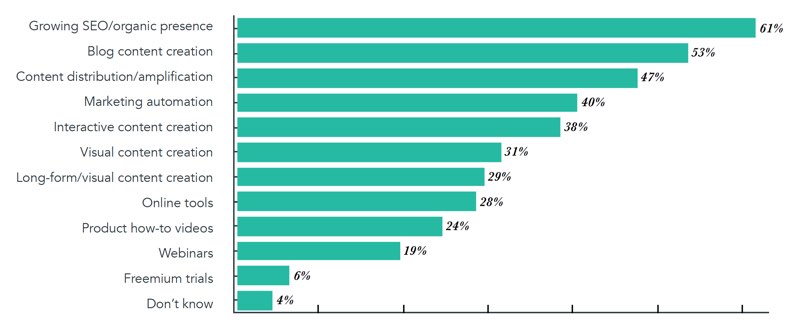
Sales are not immune to the changing buyer behavior. Since prospects are seeking their own education online, no wonder they are not responding to sales outreach (see the research below). Prospecting and identifying good leads is another major issue for sales.
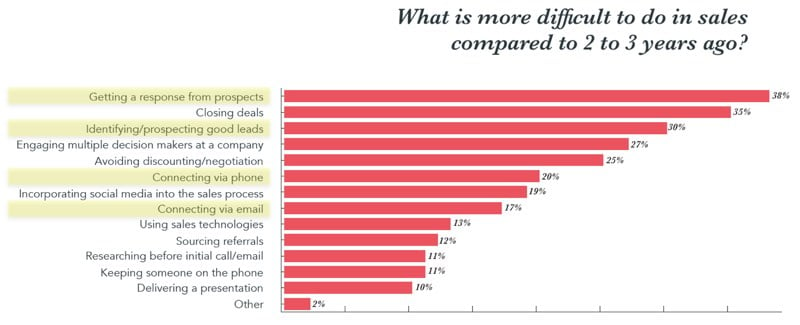
It is insightful that marketer's top priority (being found in search) and sales top issue (identifying good leads) are both addressed though search optimization and organic leads. This has led to more businesses investing in a digital marketing methodology called Inbound Marketing and marketing automation.
To address the problem of getting a response from prospects, sales teams have invested in sales enablement solutions that provide analytics about how prospects are engaging with their outreach emails and provided content. If a sales rep does not receive a call back, at least they receive signals about prospect engagement.
Further, the State of Inbound report shows that when sales and marketing are aligned, the marketing strategy is effective and supporting their business. Businesses need to focus on growth for each of their sales and marketing programs to succeed. Consider creating a SLA (Sales and Marketing Agreement) to ensure alignment. The process of creating these agreements ensures investments produce the desired results.
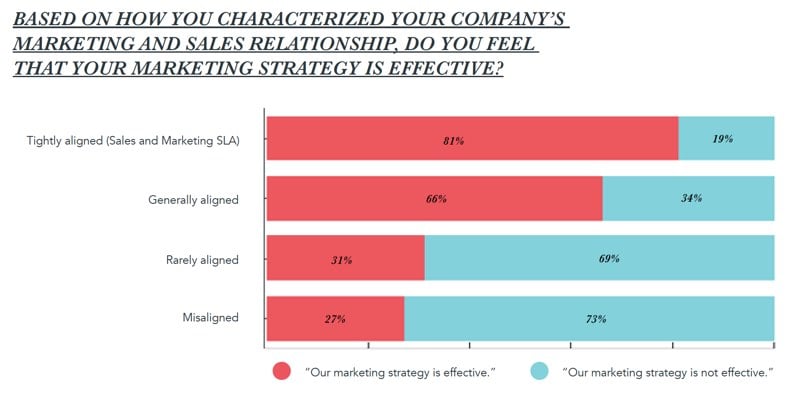
We have found that developing a sales-centered content strategy that addresses the content needs at each stage of the buyer's journey accomplishes most of the alignment goals.
This year has been one of change and challenge. The rate of change and the resulting need for adaptability in the digital domain makes our Inbound Marketing & Sales job a lot of fun. The enablement tool and search providers are all focused on the customer, and that is very good for our industry. Stay tuned with us throughout 2018 to learn and share our journey through the digital domain.
Bristol Strategy is a full funnel inbound marketing agency and inbound sales agency offering a complete complement of Inbound Marketing services that enable our clients to surpass their business objectives by transforming the way they engage with their buyer on-line. Reach out to us to learn more about how our experience and capabilities can help your business grow.
image Copyright: 123RF Stock PhotoAsk us about our unique approach that creates a full-funnel "inbound" engagement model for your business that attracts and converts digitally engaged prospects.